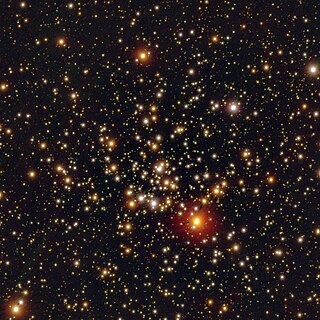
NGC 559 is an open cluster and Caldwell object in the constellation Cassiopeia. It shines at magnitude +9.5. Its celestial coordinates are RA 01h 29.5m, dec +63° 18′. It is located near the open cluster NGC 637, and the bright magnitude +2.2 irregular variable star Gamma Cassiopeiae. The cluster is 7 arcmins across.

NGC 27 is a spiral galaxy located in the constellation Andromeda. It was discovered on 3 August 1884 by Lewis Swift. It forms a galaxy pair with the nearby UGC 95.

NGC 114 is a barred lenticular galaxy located in the constellation Cetus. It was discovered by American astronomer Truman Henry Safford on September 23, 1867. The galaxy lies approximately 195 million light-years from Earth, and is about 55,000 light-years in diameter, nearly half the size of the Milky Way.
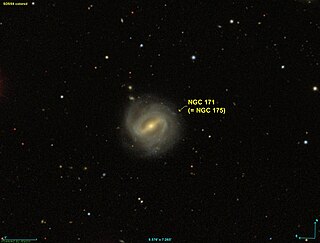
NGC 171 is a barred spiral galaxy with an apparent magnitude of 12, located around 3 million light-years away in the constellation Cetus. The galaxy has 2 main medium-wound arms, with a few minor arms, and a fairly bright nucleus and bulge. It was discovered on 20 October 1784 by William Herschel. It is also known as NGC 175.
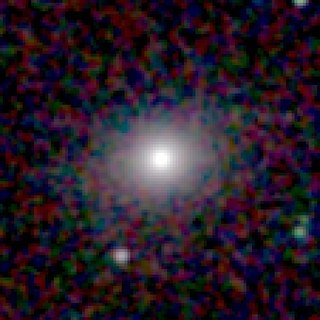
NGC 7075 is an elliptical galaxy with a radio emission located about 290 million light-years away in the constellation of Grus. NGC 7075 was discovered by astronomer John Herschel on September 4, 1834.

NGC 471 is a lenticular galaxy located about 168 million light-years away from Earth in the constellation Pisces. It was discovered by the German astronomer Albert Marth on November 3, 1864.

NGC 484 is an elliptical galaxy in the constellation Tucana. It is located approximately 218 million light-years from Earth and was discovered on October 28, 1834 by astronomer John Herschel.
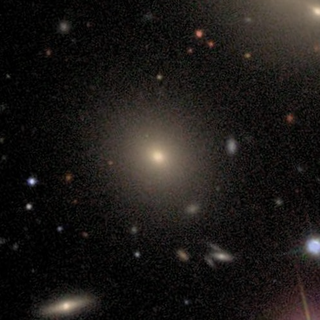
NGC 6039 is a massive lenticular galaxy located about 460 million light-years away in the constellation Hercules. NGC 6039 was discovered by astronomer Édouard Stephan on June 27, 1870 and later rediscovered by astronomer Lewis Swift on June 27, 1886. NGC 6039 is member of the Hercules Cluster, which is part of the CfA2 Great Wall.
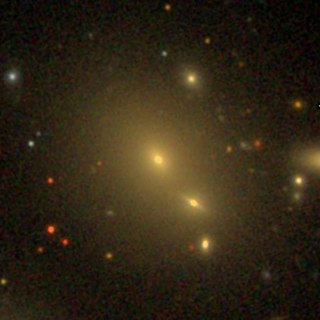
NGC 6041 is a giant elliptical galaxy located about 470 million light-years away in the constellation Hercules. NGC 6041 has an extended envelope that is distorted towards the galaxy pair Arp 122. NGC 6041 is the brightest galaxy (BCG) in the Hercules Cluster. The galaxy was discovered by astronomer Édouard Stephan on June 27, 1870.
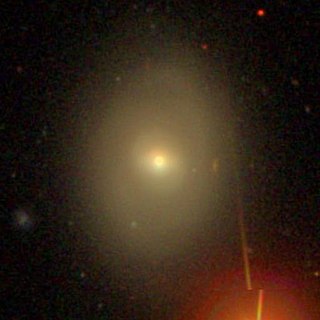
NGC 4659 is a lenticular galaxy located about 54 million light-years away in the constellation Coma Berenices. NGC 4659 was discovered by astronomer William Herschel on April 12, 1784 and is a member of the Virgo Cluster.
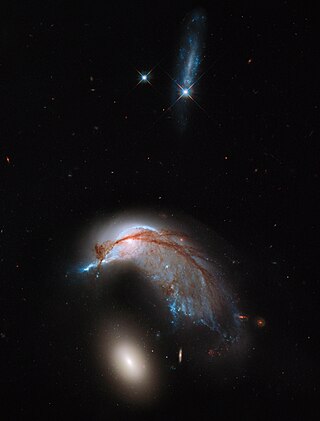
NGC 2936 is an interacting spiral galaxy located at a distance of 326 million light years, in the constellation Hydra. NGC 2936 is interacting with elliptical galaxy NGC 2937, located just beneath it. They were both discovered by Albert Marth on Mar 3, 1864. To some astronomers, the galaxy looks like a penguin or a porpoise. NGC 2936, NGC 2937, and PGC 1237172 are included in the Atlas of Peculiar Galaxies as Arp 142 in the category "Galaxy triplet".

NGC 4320 is a peculiar galaxy located about 370 million light-years away in the constellation Virgo. It was discovered by astronomer Heinrich d'Arrest on April 15, 1865 and is a member of the NGC 4325 Group.
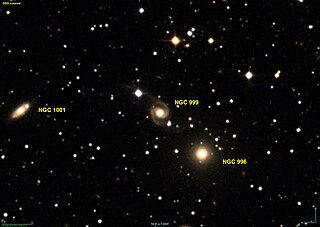
NGC 999 is an intermediate spiral galaxy located in the constellation Andromeda about 195 million light-years from the Milky Way. It was discovered by the French astronomer Edouard Stephan in 1871.

NGC 900 is a lenticular galaxy located in the constellation Aries about 430 million light-years from the Milky Way. It was discovered by the German astronomer Albert Marth in 1864.

NGC 811 is an object in the New General Catalogue. It is an elliptical galaxy located in the constellation Cetus about 700 million light-years from the Milky Way. It was discovered by the American astronomer Francis Leavenworth in 1886. However, it is usually misidentified as a different object, the spiral galaxy PGC 7905.
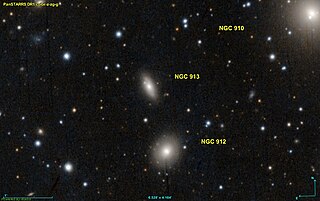
NGC 913 is a lenticular galaxy located in the constellation Andromeda about 224 million light years from the Milky Way. It was discovered by French astronomer Édouard Stephan in 1878.

NGC 824 is a barred spiral galaxy located in the constellation Fornax about 260 million light-years from the Milky Way. It was discovered by British astronomer John Herschel in 1837.
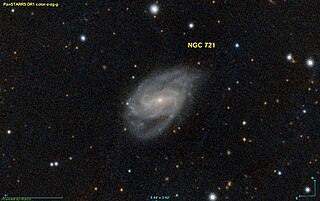
NGC 721 is a barred spiral galaxy located in the constellation Andromeda about 250 million light years from the Milky Way. It was discovered by the Prussian astronomer Heinrich d'Arrest in 1862.

NGC 606 is a barred spiral galaxy located in the Pisces constellation about 470 million light-years from the Milky Way. It was discovered by the French astronomer Édouard Stephan in 1881.

NGC 713 is a spiral galaxy located in the constellation of Cetus about 234 million light years from the Milky Way. It was discovered by the American astronomer Francis Leavenworth in 1886.




















